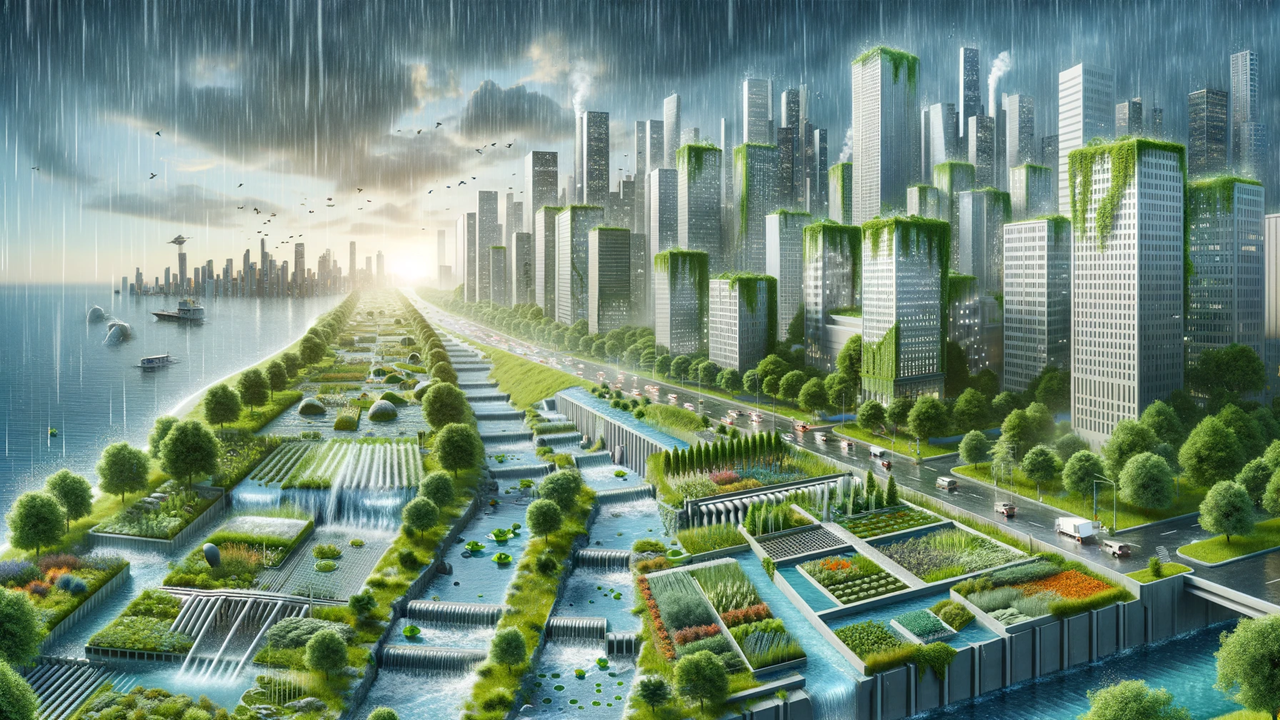Sustainable Urban Drainage Systems (SUDS): Tackling Urban Flooding and Water Management
This article explores the transformative potential of Sustainable Urban Drainage Systems (SUDS) in mitigating urban flooding and revolutionizing water management. Through innovative design and natural processes, SUDS offer a holistic approach to tackling the challenges of urbanization and climate change.

In the face of escalating urban flooding and the pressing demands of climate change, cities worldwide are turning to Sustainable Urban Drainage Systems (SUDS) as a beacon of hope and innovation. These systems, designed to mimic natural water processes, represent a seismic shift in how urban environments manage rainfall, transforming a historical challenge into an opportunity for resilience and sustainability.
The Rising Tide of Urban Flooding
As concrete jungles expand, their impermeable surfaces create a domino effect of environmental challenges, chief among them being urban flooding. Traditional drainage infrastructure, typically characterized by its reliance on underground sewers to swiftly channel rainwater away, has proven inadequate in the face of increased rainfall intensity and urban expansion. This has led to overwhelmed sewer systems, polluted waterways, and devastated communities.
Introducing Sustainable Urban Drainage Systems (SUDS)
Sustainable Urban Drainage Systems (SUDS) offer an elegant solution to these challenges. Rooted in the principles of working with nature, SUDS aims to manage rainwater as close to its source as possible, minimizing runoff and improving water quality. These systems incorporate a variety of elements, from green roofs and permeable pavements to rain gardens and constructed wetlands, each playing a part in slowing down water flow, promoting infiltration, and enhancing biodiversity.
The Multifaceted Benefits of SUDS
The adoption of SUDS transcends mere water management; it heralds a myriad of environmental, economic, and social benefits.
Environmental Impact: By promoting natural infiltration, SUDS replenish groundwater supplies and reduce the risk of flooding. This natural processing of water also filters out pollutants, improving the quality of water entering rivers and streams. Moreover, the integration of green spaces and habitats within urban areas supports biodiversity and creates urban cooling effects, mitigating the heat island phenomenon prevalent in cities.
Economic Advantages: SUDS are cost-effective, often requiring less capital investment and lower maintenance costs than traditional drainage systems. They also mitigate flood damage, saving communities and governments significant sums in the long run. Additionally, the aesthetic and recreational value of green spaces can enhance property values and attract business investments.
Social and Health Benefits: Green spaces within SUDS provide recreational areas for communities, promoting physical activity and mental well-being. They also foster community engagement and education around water sustainability, encouraging stewardship of local water bodies.
Overcoming Challenges and Implementing SUDS
The journey to integrate SUDS into urban landscapes is not without its obstacles. Legal and regulatory frameworks, financial constraints, and the need for interdisciplinary collaboration can pose significant challenges. However, pioneering cities around the globe are finding innovative ways to navigate these hurdles, demonstrating that the successful implementation of SUDS is not only possible but profoundly beneficial.
Policy reforms that incentivize green infrastructure, cross-sector partnerships that leverage expertise and resources, and public awareness campaigns that highlight the importance of sustainable water management are key drivers in the adoption of SUDS. Furthermore, integrating SUDS into urban planning and development from the outset can ensure their seamless incorporation into the fabric of cities.
The Future of Urban Water Management
As we move forward, the role of SUDS in urban water management is set to grow. Advances in technology and design promise to enhance the efficiency and scalability of these systems, making them adaptable to diverse urban environments. The increasing recognition of the need for climate resilience and sustainable urban development is also driving the adoption of SUDS, positioning them as a critical component of future-proof cities.
The embrace of Sustainable Urban Drainage Systems marks a significant paradigm shift in urban water management. By harnessing the power of natural processes, SUDS offers a comprehensive approach to mitigating urban flooding, enhancing water quality, and creating more livable, resilient cities. As the challenges of urbanization and climate change continue to evolve, so too will the strategies to address them, with SUDS leading the charge in redefining our relationship with water in the urban landscape.
In conclusion, the journey toward sustainable urban development is complex and multifaceted, requiring innovative solutions like Sustainable Urban Drainage Systems. By integrating SUDS into our cities, we can address the pressing challenges of urban flooding and water management, paving the way for a future where urban environments are not just survivable but thrive in harmony with the natural world. The path forward is clear: embracing SUDS is not just beneficial; it's imperative for the sustainability and resilience of our urban landscapes.










